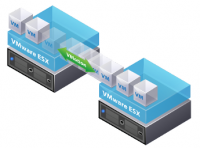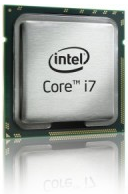I created and uploaded this video to youtube back in 2009, but I thought it might be helpful for others if I post the link here. It’s just a simple video that shows you how you can use telnet to determine if your e-mail server is running. Telnet can be a great tool for troubleshooting connectivity and server issues. Continue reading
Perl – Converting the Time from 24 hr to 12 hr Format
Below is a Perl script that demonstrates how to appropriately convert the current time from 24 hr format to 12 hr format. The ‘convertToTwelveHr’ subroutine does all the work here. The 24 hr input value is passed into the subroutine and a two-element list containing the 12 hr value equivalent and a string of either ‘AM’ or ‘PM’ is returned. Continue reading
Intel VT FlexMigration and AMD-V Extended Migration – Enabling Dynamic, Agile Data Centers
 Server virtualization/consolidation is becoming a norm and data centers and enterprises are now looking towards the horizon at how to bring dynamic, agile, and flexible capabilities to their IT infrastructure.
Server virtualization/consolidation is becoming a norm and data centers and enterprises are now looking towards the horizon at how to bring dynamic, agile, and flexible capabilities to their IT infrastructure.
What I will focus on here is one specific technology that helps meet this goal called Live Migration, the capability to move active Virtual Machines (VMs) across a pool of physical servers with no downtime. If a VM is running on a server that is reaching high utilization or where resources are becoming constrained, Live Migration can migrate the active VM to a different physical server with absolutely no downtime. Now this is what I call truly dynamic and agile! Continue reading
Cisco VLAN Trunking Protocol (VTP)
VLAN Trunking Protocol (VTP) is a Cisco proprietary protocol that reduces administration in a switched network. When you configure a new VLAN on one VTP server, the VLAN is distributed through all switches in the domain. This prevents you from having to configure the same VLAN everywhere. The goal is to manage all configured VLANs across a switched internetwork and to maintain consistency. Continue reading
Address Resolution Protocol (ARP)
Address Resolution Protocol (ARP) is used by IP devices to locate the hardware addresses of other devices on the local network. RFC 826 introduced ARP as a method for IP devices to locate other IP devices on the same local network by Ethernet hardware address. RFC 1122 clarified RFC 826 further,and a correct ARP implementation needs to incorporate both RFC 826 and RFC 1122. Continue reading
Cisco – Spanning VLANs across Switches via Trunking
In this lab I use two Cisco WS-C2960-24TT [IOS 12.2(25)FX] switches to demonstrate how to span VLANs across switches via 802.1q trunking. I avoid using VTP by using “VTP transparent mode”; as a result, I have to configure the VLANs on both switches. Also, the Cisco 2960 switch only allows you to use 802.1q encapsulation. However, on some other Cisco switches the default encapsulation is a Cisco proprietary protocol called Inter-Switch Link (ISL). If you are using one of these switches and you want to use 802.1q instead of ISL, you will have to manually change the encapsulation type. Continue reading
Setting-up Tomcat 7 on Windows 7
 Apache Tomcat 7 is unique compared to prior releases as it supports the Servlet 3.0, JSP 2.2, and EL 2.2 specifications. However, make note that Tomcat 7 requires Java 1.6 or higher. Continue reading
Apache Tomcat 7 is unique compared to prior releases as it supports the Servlet 3.0, JSP 2.2, and EL 2.2 specifications. However, make note that Tomcat 7 requires Java 1.6 or higher. Continue reading
Perl – merging files
Below I demonstrate a quick method of merging two files into a third file using Perl. The program merges two files together into a third file by writing one line from file one to file three and then writing one line from file two to file three; this pattern is then repeated until all contents from both file one and file two
have been written to file three. Continue reading

 Intel Hyper-Threading Technology (HT Technology) enables each processing core to run multiple tasks or “threads” at the same time. Intel HT Technology also improves overall performance on threaded software by increasing processor throughput. For each physical processor core, the operating system addresses two virtual processors. For example, a processor with two cores with HT Technology will be capable of 4-way multitasking.
Intel Hyper-Threading Technology (HT Technology) enables each processing core to run multiple tasks or “threads” at the same time. Intel HT Technology also improves overall performance on threaded software by increasing processor throughput. For each physical processor core, the operating system addresses two virtual processors. For example, a processor with two cores with HT Technology will be capable of 4-way multitasking. 

 Twitter
Twitter LinkedIn
LinkedIn Youtube
Youtube RSS
RSS